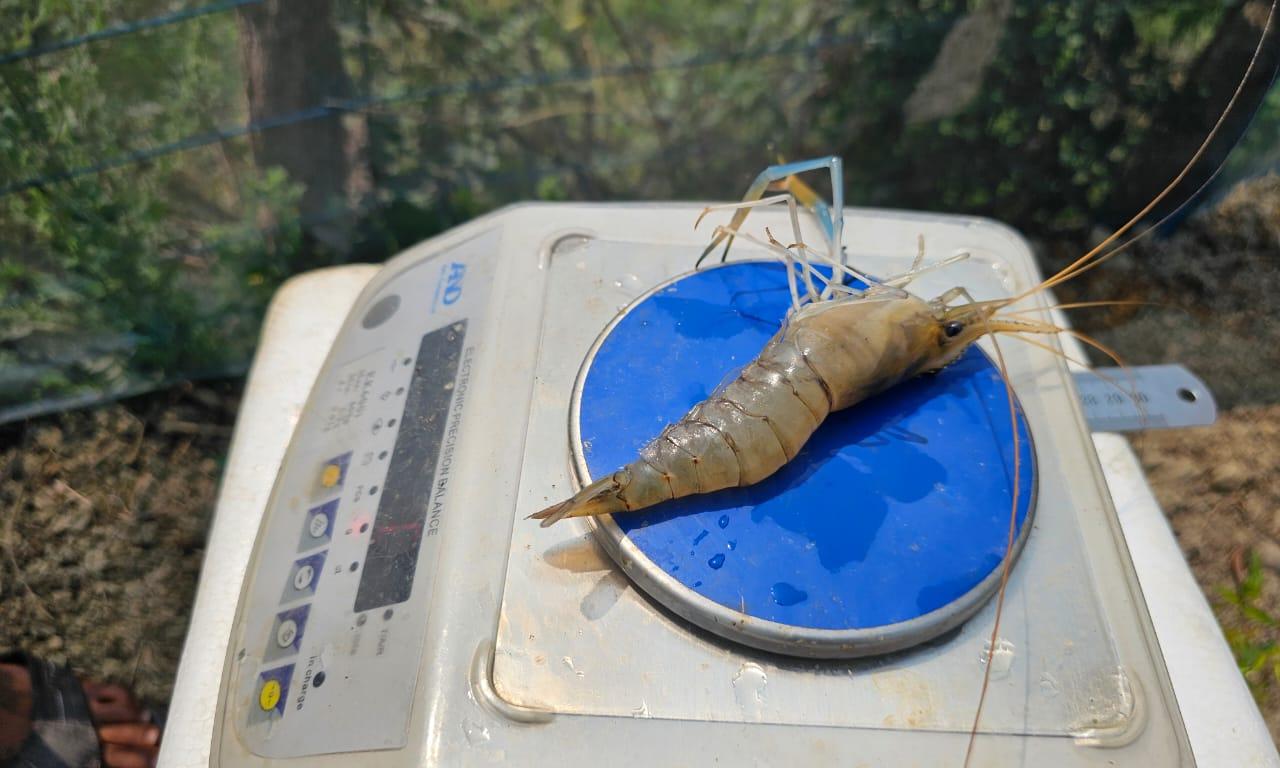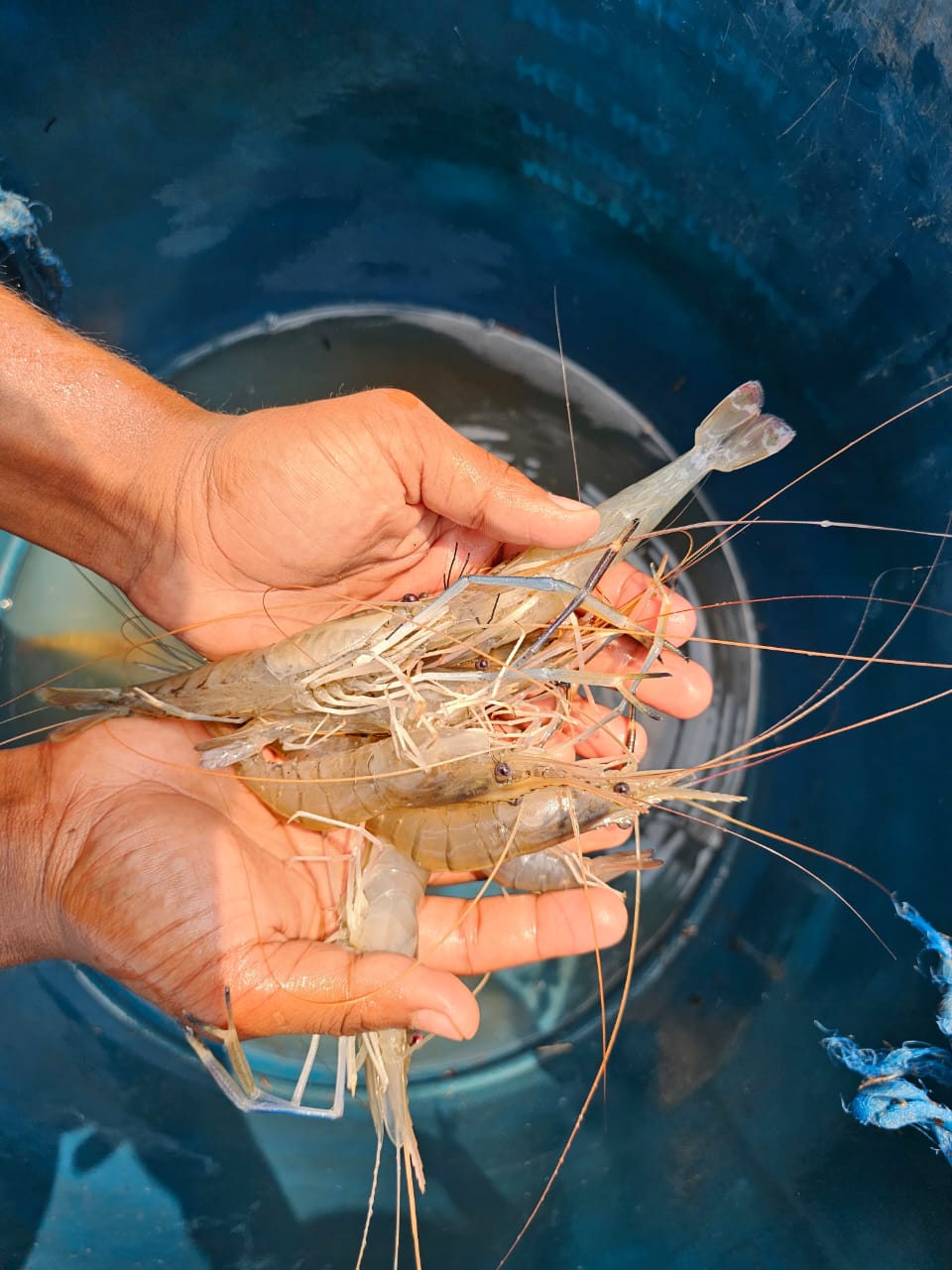
WorldFish is working with research partners in Bangladesh to develop customized Integrated Multi-Trophic Aquaculture (IMTA) systems for small-scale prawn farmers in the country. Initial results show that IMTA can enhance the livelihoods, nutrition, and income of coastal communities, while also contributing to sustainable aquatic food systems in a country that is highly vulnerable to climate change.
To address the growing concern about the long-term environmental sustainability of aquaculture in coastal areas of Bangladesh, many local fish farmers are slowly turning to Integrated Multi-Trophic Aquaculture (IMTA) systems as an alternative approach. IMTA employs a circular, ecosystem-based approach by integrating various aquatic species from different trophic levels, enhancing aqua farming efficiency while reducing environmental impacts and diversifying income sources.
Asia-Africa BlueTech Superhighway (AABS) Work Package 2 has been supporting this transition by assessing and testing IMTA practices in coastal Bangladesh, taking into account diverse technical, environmental, social, and market elements.
A Ray of Hope for Prawn Farmers in Khulna
The giant freshwater prawn(Macrobrachium rosenbergii) is a widely farmed species in Asia. It is valued for its rapid growth, substantial size, disease resistance, compatibility with freshwater systems, and suitability for polyculture with finfish. However, traditional farming methods face challenges due to the prawn's cannibalism and aggressive male behavior, leading to low production rates in Bangladesh (about 100-300 kg/ha).
To increase the productivity and quality of prawn farms, AABS, in partnership with Fisheries and Marine Resource Technology (FMRT) at Khulna University, has been conducting research activities in Dumuria in Khulna district on how IMTA can be an option to enhance the yield and attributes of giant freshwater prawns while assessing the economic and environmental benefits of this “green technology” for small-scale coastal farmers.

|
The AABS team evaluated the production performance of giant prawn and major carp in an IMTA ecosystem, supplemented with lotus and bivalve mollusks under low salinity conditions. The team assessed parameters such as growth, production performance, aquatic biodiversity, and nutritional profile of the prawn and major carp. Additionally, an economic analysis compared profitability between the control and experimental conditions. In March 2025, a sample check showed that the mean weight of prawns and carp was higher in the experimental ponds compared to the control pond. Further results are awaited.
The IMTA model is advantageous in low salinity environments, particularly for freshwater prawns, which exhibit better disease resistance compared to penaeid shrimp. This system enhances the profitability of small-scale farmers by ensuring that M. rosenbergii, which requires low salinity for gonadal maturation, can thrive. Consequently, the IMTA system not only boosts production performance but also supports broodstock development, leading to high-quality seed production in hatcheries.
The IMTA method has also positively affected the nutritional composition of the prawns.
“The IMTA model offers a preferable environment for prawns during molting, provides natural food sources, and improves water quality and overall environmental conditions,” stated Dr. Md. Lifat Rahi, Professor and Principal Investigator at FMRT, Khulna University.
He went on to mention other advantages of the IMTA system – it delivers a sustainable alternative for farmers to cultivate edible plants more efficiently than on land, reduces temperature fluctuations caused by global warming, creates a variety of food products, lessens aquaculture waste discharge into the environment, and allow for prawn farming at a lower cost.
The outcomes can be expanded as a base for installing large-scale profitable IMTA techniques. Finally, the technology will be disseminated to boost the socio-economic condition of the local inhabitants.
“A large number of small-scale coastal aquaculture farmers in Khulna, who have been practicing traditional modes of farming with very low yields, will benefit from the IMTA technology,” said Dr. Lifat.
Md. Iqbal Hossain, owner of EFG Aqua Farm at Dumuria, said,
“Prawn farmers are hopeful that a sustainable model such as IMTA for farming giant freshwater prawns will improve our yield and as a result our livelihoods and quality of life.”
